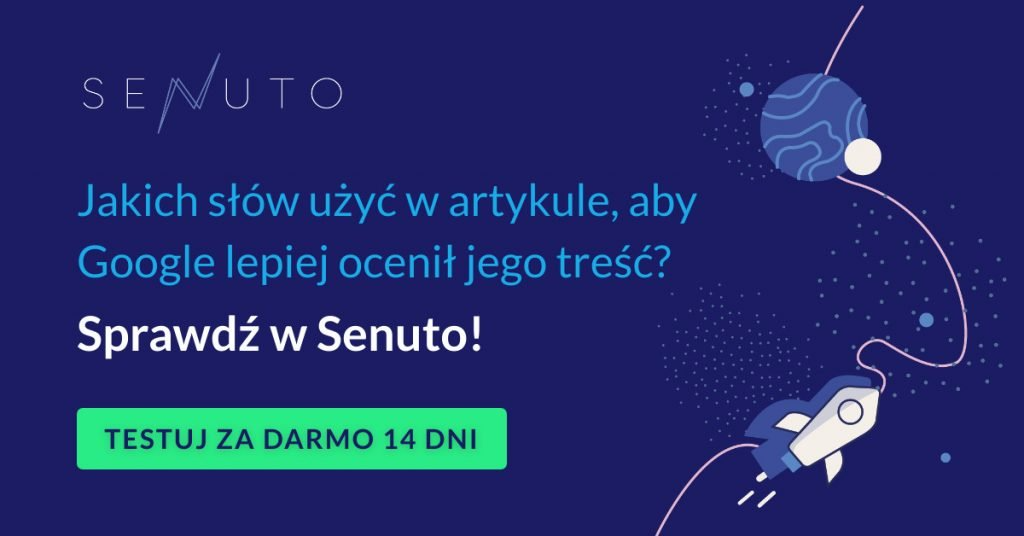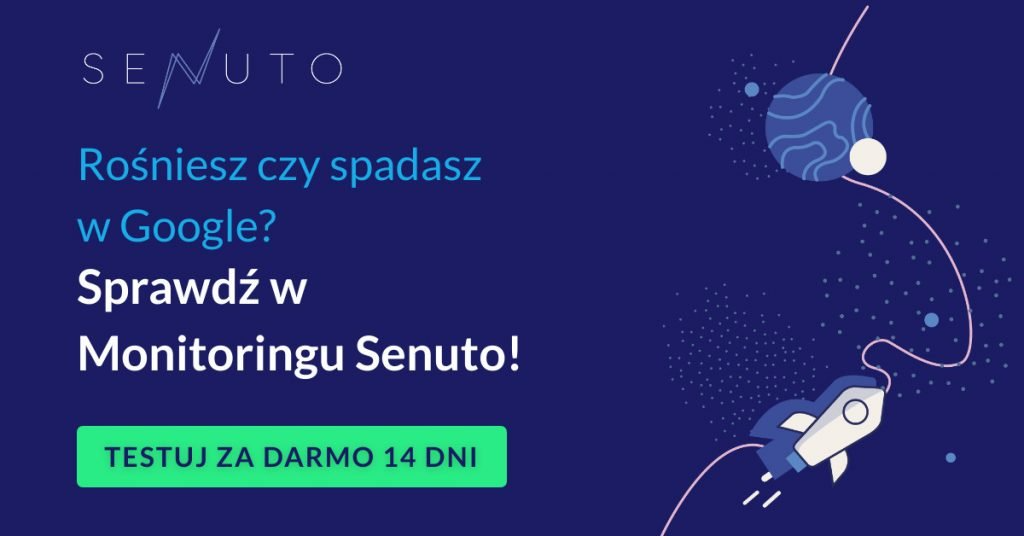Want to effectively persuade customers to take an interest in your product or service, or perhaps encourage them to subscribe to your newsletter on your company blog? Test how and why to use benefit language in your business to achieve specific goals.
.Advertising descriptions, sales offers, advertising texts will not sell if they lack… skillful persuasion. And you can only convince customers to buy, click on a link, or do something else, using benefit language. It’s not enough if you present the product features alone, because for curious customers they won’t be enough reason to stay on the site. Not to mention taking the time to learn about the product, sign up for your newsletter or read the text to the end. This is why well-designed content is so important on the web.
.Remember that with features alone you will not convince the customer to buy, because they will not answer the questions in his head:
. .- “And why should I buy it?” .
- “What do I gain if I buy this product?” .
This explains why your texts must never lack benefits to convince customers to buy. Want to know more about how to apply benefit language in practice? I invite you to read more!
.1. What is benefit language and how does it work?
. .Benefit language is a powerful tool used in many different industries to convince customers of the benefits of products or services. How? If you’re describing your company’s services on your website, don’t just focus on the features, but show what the customer will realistically gain from them.
. .Example 1:
. .If you want to encourage someone to sign up for your newsletter such as one about a blog on marketing, you can write a sentence like this with benefit language:
.- Carefully selected marketing materials that you won’t find in other newsletters.
This way, your new subscriber knows right away what to expect and receives the promise of unique, quality and original inspiration.
. .Example 2:
. .If you provide services to create graphically beautiful websites for women’s businesses, you can advertise them like this:
.- I create meticulously designed and usable websites for women’s businesses that keep customers’ eyes on them for longer. .
Example 3:
. .How to describe a financial management planner with double benefit language?
. .- Financial Management Planner will allow you to simply organize your personal and business budgets in one notebook, so you’ll have all your expenses under control.
2. Why should you use benefit language in business?
. .The purpose of benefit language is simple: it is to convince the customer to buy.
. .With its help:
. .- courage the audience of a specific target group to click on the link; .
- you will influence their senses; .
- you will dispel pre-purchase objections; .
- you will demonstrate the value of your products or services; .
- convince customers that a specific action is worth taking; .
Benefit language is a skillfully designed story about a product or service. To naturally interest the customer in what they will gain from the purchase and show them how it will meet their needs and solve their problems.  Your customer must not have any doubts at the purchase decision stage, and benefit language is a tool that effectively helps combat them. That’s why well-designed words and a carefully thought-out message are so important.
Your customer must not have any doubts at the purchase decision stage, and benefit language is a tool that effectively helps combat them. That’s why well-designed words and a carefully thought-out message are so important.
Functions of benefit language with examples
. .Benefit language has many functions:
. .- informational – describes, for example, the features of an item that clearly show why it is worthy of interest. E.g. Hand-painted pansy scarf is the latest hit this summer! .
- encouraging – encourages you to learn about the advantages of the product and often shows the differences between the item presented and a competing item. E.g., “Don’t know whether to choose a scarf made of natural silk or cotton? A scarf made of 100 percent silk allows the skin to breathe, because it lets the air pass through and is safe even for sensitive skin.” .
- marketing – naturally convinces customers of the benefits of their purchase and allows you to easily show how an item will solve the customer’s problems by pointing out specific arguments. E.g., “This is a nice-to-touch scarf sewn from 100 percent silk in Italy at the manufacturer Very Giovani, so you gain confidence that it is a scarf with original tags, not a Chinese fake. .
- persuasive – naturally influences a specific decision of the recipient. E.g., “Want a neckerchief you can wear with anything? Now you can order it cheaper by up to 50%!” .
How to use benefit language to sell? [examples]
. .The salesman, when he wants to sell something, first asks the customer: “How can I help you?”.
. .Demonstrate how your product will help the customer solve his problems, using the feature – advantage – benefit scheme and the AIDA scheme, which you will read about in a moment.
. .- Prove that it’s worth spending more money on a hairbrush and report why. .
- Show the difference between one coolant and another. .
- Revoke the concerns in the mind of a client who is looking for lessons on how to properly tie a sling from an experienced person, and present the benefits that will make her decide to use such a service. .
Examples of benefit language
. .How to write in the language of benefits?
.If you are a wedding photographer and you want to reach the heart of your client – always appeal to emotions and make your client imagine the most beautiful day of his life in unique frames. Reassure him that you will take for him exactly the photos he expects. This will make him feel that he has a chance to hire someone who understands his photographic vision. Create benefits in the text as if you were painting pictures in the client’s head with a brush.
. . .Examples
. .“I will create for you the most beautiful wedding frames that will stimulate the emotions of this most important day even after many years.”
.- Look at the example below, in which I show you describe the same product in two different ways. .
Imagine that you are a manufacturer of Cristalic brand water filter pitchers. Your goal is to first present these products to a specific group of customers, and then convince customers to buy.
.Look at two examples of pitcher descriptions and note how the product is presented:
. .Our water pitchers are in a class of their own. They make everyday life easier in every second household. They are designed with the latest technology that effectively purifies water.
.No specifics, product extolling and mere verbal fillers, right? Now compare this description:
. .We are manufacturers of Cristalic brand water filter pitchers. Our goal is to effectively purify water, inspire you to change your habits and motivate you to live healthier. With a view to a healthier and more conscious life, we have created water filter pitchers that effectively purify water with an accuracy of 0.1 microns from contaminants: heavy metals, sediment, chlorine and organic chlorine compounds. All this so that you can enjoy the depth of flavor of your favorite drinks in every drop of water.
.Do you see the difference? Which description is more concrete and convinces you more?
.- And now see a sentence of a sample description of another pitcher, in which the language of benefits is missing: .
This functional pitcher filters 1.5 liters of water at a time.
.Well, what do you think is missing here? The question is what will this one-time filtration give me? This is where the benefits are missing that will convince a potential customer to choose this pitcher.
.- Tip: never copy descriptions from manufacturers’ sites into your store, because Google doesn’t like duplicate content. It may even block your site by doing so. Your site may only be on a few more pages in search results, making it harder for customers to find it. .
 Supporting questions you can ask yourself at the text design stage:
Supporting questions you can ask yourself at the text design stage:
- What will you focus on? .
- What is most important to your customer? .
- What benefits will you communicate to the customer? .
- What will the customer gain from the thoroughly filtered water and how will the pitcher change their lives? .
Benefit language in copywriting and the AIDA scheme
. .Wondering how to write with the language of benefits? Every copywriter should know the AIDA schema and how to put it into practice when creating sales proposals. This is not an easy task, but you can use a certain writing scheme. Which one?”
.The AIDA marketing scheme consists of several elements:
.- A – Attention – attention, .
- I – Interest – interest, .
- D – Desire – desire, .
- A – Action – action, .
You can also extend the AIDA scheme to include a satisfaction guarantee, e.g., a refund in case of dissatisfaction or a product return service to the online store beyond the standard 14 days. You can also cite, for example, on your sales page, recommendations from other customers who are satisfied with your product. Read also: The SEO tutorial for a copywriter. What as a copywriter you need to know about SEO?
. .Benefit language is an essential tool when:
. .- selling a product, service or offer, .
- subscribe to a blog newsletter e.g., sign up for the newsletter and get a 10% discount on your first order.
- download an e-book on a topic of interest e.g. Download 40 tips from marketing practitioners and start sweeping in online marketing. .
The key to good sales is to choose the right messages, but also words that will interest the customer. It is also very important to know the target group to which we are directing the message and to know how to create personae – portraits of customers from the target group.
.Benefit language in marketing is a flexible tool that benefit-by-benefit “leads” the customer to a destination like a footprint in the snow or sand to a specific place. Provided the sales story is skillfully presented or written.
.Sales product descriptions – feature-value-benefit scheme
. .Are you running an online store, but wondering why products are not selling? The problem may lie in the fact that your products are inadequately described, and you are not using sales language in your descriptions.
.This is a fairly common phenomenon. Believe me, I see in many stores that quite a few business owners,are not using the full potential of benefit language.
.When describing a product, remember to present the feature first. Then you need to think about what the product’s advantage is that might interest the customer. The next step is to answer simple questions in the form of benefits:
. .- What will the customer gain by buying this? .
- What will it help him? .
- How will it solve his problems? .
Using benefit language refers to the scheme used in product descriptions on websites: feature – benefit – advantage. These three words form a coherent whole in advertising content.
.Examples of using benefit language in other industries
. .How to write with benefit language? Check out some of my examples from different industries.
. .Wearables
. .- Product: push-up bra .
- Example excerpt from description:Our Velo series lace embroidered push-up bra will enhance even the smallest of breasts.
- The push-up bra with lace embroidery will enhance even the smallest of breasts.
- CONSTITUTION: push-up bra (lifts the breasts)
.- BELIEF: lace embroidery
.- CONVERSION: enhances even the smallest breasts
.
Florist
. .- Product: bouquet of red roses .
- Example excerpt from description: A bouquet of red roses is a carefully selected composition that will allow you to enchant any woman.
- The bouquet of red roses is a carefully selected composition that will allow you to enchant any woman.
- Features: red roses
.- Benefit: carefully selected composition
.- Benefit: allows you to charm any woman
.
MOTORIZATION
. .- Product: Kleber multi-season tires .
- Example excerpt from description: Kleber multi-season tires with the highest quality rubber compound guarantee safe travel through all seasons and save time on replacements.
- CECHAIRS .
- CONSTITUTION: multi-season tires .
- Benefit: highest quality rubber compound .
- Benefit: travel safety for all seasons and save time on replacements .
Tires for all seasons – such a message already automatically creates a specific image in the customer’s mind linked to the fact that he does not have to replace them according to the season. He will replace them only when the technical condition of the tires requires it, thus saving time.
. . .KIDS’ footwear store
. .- Product:children’s shoes .
- Example excerpt from description:The sole is solidly made of high-quality plastic and lightly insulates the foot from the ground, ensuring safety with every step and excellent cushioning.
- CONTROL:High-grade plastic. .
- BENEFIT:solidly made sole, slightly insulates the foot from the ground. .
- Benefit: provides safety when walking and excellent cushioning. .
Helpful phrases in the language of benefits
.How to write about benefits in texts? Don’t forget the reliable terms that will help you start looking for the most important benefits in products.
.Benefit language consists of the following phrases:
. .- Facilitates, .
- accelerates, .
- increases, .
- guarantees, .
- enables, .
- helps, .
- provides, .
- enables, .
 “Proven efficacy and clinically proven”, “Positive opinion of the Institute of Mother and Child” – you know such phrases?
“Proven efficacy and clinically proven”, “Positive opinion of the Institute of Mother and Child” – you know such phrases?
These are nothing more than evidence influencing how you perceive advertised products. Surely you have similar phrases in your industry that you can use to inspire the customer about the credibility of the product. Such phrases are used to put products in a good light and at the same time are a “lure” for customers. They inspire trust, but only if they are actually truthful.
.Nearly everywhere you can spot persuasive words that share one common goal – to convince you to buy. The flashy, neon-colored labels in the supermarket that say “Buy 2, pay less” are precisely the benefit language used to get you to buy more for less.
.Summary: How to harness the power of benefit language?
.The ability to use benefit language is not a fad these days, but an effective tool for anyone who believes in the selling power of words.
.Write with the language of benefits in a natural way. Never forget to whom you are directing the message. In a well-balanced way, use accurate arguments and sentence by sentence, create a convincing story about your product or service. In this way, you will increase the sales of products in online stores; you will evoke certain behaviors in customers.
. Małgorzata Kalbarczyk-Leonczuk
Małgorzata Kalbarczyk-Leonczuk